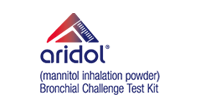Isn’t it just asthma? Actually, no. Over the years, the definition of asthma has changed. Rather than a catch-all diagnosis for bronchoconstriction, airway inflammation, wheezing, cough and mucus production, asthma is recognized as an umbrella term with multiple presentations of the physical symptoms we know as asthma. The current definition of asthma from GINA (Global Initiative for Asthma) reads “asthma is a heterogeneous disease, usually characterized by chronic airway inflammation. It is defined by the history of respiratory symptoms such as wheeze, shortness of breath, chest tightness and cough that vary over time and in intensity, together with variable expiratory airflow limitation.”1 Under the umbrella of asthma, there are many ‘phenotypes’ of asthma – how the condition “presents” or “looks”, the triggers and symptoms. Commonly identified phenotypes of asthma include allergic, non-allergic, exercise-induced, occupational, obesity-related, etc. The complex nature of asthma has spurred research to dig deeper into the “why” behind the phenotypes. What researchers are now looking at closely are asthma endotypes. The endotype is the pathobiological mechanism behind what we see. Understanding the endotypes of asthma allows physicians to incorporate personalized treatments for their patients.
In Methapharm’s newest CRCE, Rethinking Asthma – Endotypes & Phenotypes, we focus on the severe asthma endotypes, T2-high and T2-low. This presentation offers a high-level introduction to what it means to have a T2-high or T2-low endotype. Respiratory Therapists learn how the various biomarkers and characteristics can be utilized to identify the optimal treatment for patients that targets the underlying cause. Eosinophilic airway inflammation is the recognized marker of T2-high asthma. But that is not the only characteristic we see. Basophils, mast cells and IgE are all mechanistic characteristics seen in T2-high asthma.2 Interestingly, there is much less understood about T2-low than T2-high asthma. In fact, it is the absence of T2-high markers that leads to a T2-low designation.2 Learning more about the various markers of the different endotypes brings a level of understanding to asthma we have not had previously. While delving into the topics of biomarkers and endotyping has not been routine for many healthcare workers, often not visited once we finish our degrees, we must become knowledgeable about targeted treatments for our chronic patients. By honing our skills and increasing our understanding of the unseen characteristics driving disease, we are better able to anticipate the progression and guide patient management. This deeper knowledge of the disease enhances our ability to partner with other healthcare professionals to collaborate and drive the best outcomes for patients.
Asthma is costly. Between hospitalizations, emergency department visits, office visits, medications, and missed time at work and school, the economic burden of asthma rests at approximately $83 billion in the USA.3 Severe asthma makes up the smallest group of asthma patients but accounts for the greatest expenditure.4 Biologic medications are currently reserved for severe asthma patients. However, is there opportunity to expand the use? Can we utilize different prescribing methods of these targeted medications, such as seasonal use? These are questions currently being explored in research. By gaining a greater understanding of the mechanistic pathways of asthma we will be better able to control asthma, its related costs and improve our patient’s quality of life.
Rethinking Asthma also highlights how cluster analysis is a novel way to look at severe asthma and what this means. The presentation reviews one research study’s approach and the characteristics it found to be prevalent in the various patient clusters identified. Cluster analysis accounts for the heterogeneity of asthma and may well present a means to identify a patient’s asthma severity prospectively, assist in identifying a targeted treatment and identify patients at higher risk of exacerbations and complications.5
Much like our understanding about endotypes, changing how we traditionally approach asthma by looking at clusters is new. Asthma has been, and continues to be, a challenging condition for both patients and healthcare professionals. It behooves us all to study the changing landscape of this chronic disease.
Author: Heather Murgatroyd, BA, RRT
Methapharm Inc.
- Global Initiative for Asthma. Global Strategy for Asthma Management and Prevention, 2020. Available from: www.ginasthma.org
- Kuruvilla, M.E., Eun-Hyung Lee, F., Lee, G.B.. Understanding Asthma Phenotypes, Endotypes and Mechanisms of Disease. Clin Rev Allergy Immunol. April 2019; 56(2): 219-233. doi:10.1007/s12-16-018-8712-1.
- Numragambetov, T, Kuwahara, and P Garbe. The Economic Burden of Asthma in the United States, 2008-2013
- Chung KF, Wenzel SE, Brozek JL; ERS/ATS Task Force on Definition, Evaluation and Treatment of Severe Asthma. Eur Respir J. 2014 Jul;44(1):267-8. doi: 10.1183/09031936.00064614.
- Moore, W.C., et al. Identification of Asthma Phenotypes Using Cluster Analysis in the Severe Asthma Research Program. Am J Respir Crit Care Med Vol 181. pp 315-323, 2010








